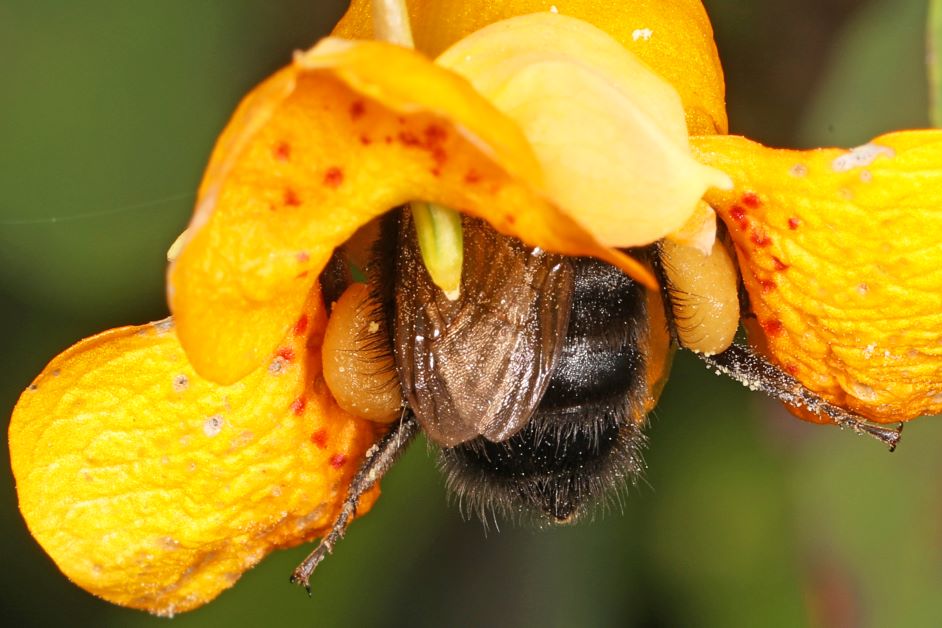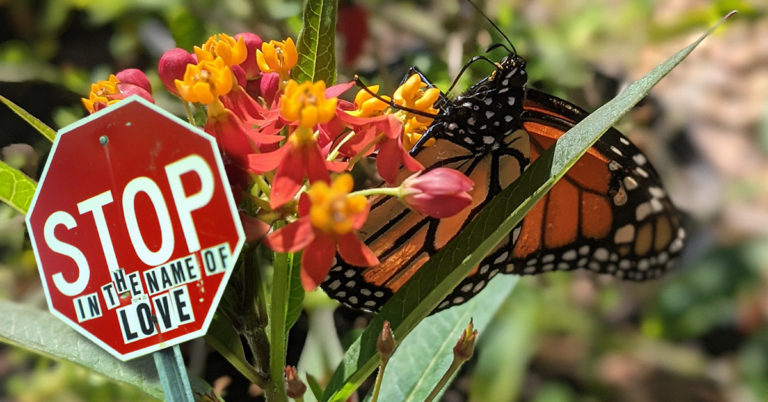Native Bees of Florida
Thanks to our unique geographical location, Florida is 7th in the country when it comes to species diversity. That diversity applies to all sorts of flora and fauna, bees included. There are more than 300 native bees of Florida, and 29 of those are endemic to the state.
When a species is native, it can still live in more than one location. The live oak, for instance, is native to Florida but also to parts of Georgia, Alabama, Virginia, Louisiana, and Texas. Native means that the species wasn’t introduced from one area to another.
Endemic, on the other hand, means that the species only exists where it lives. You’ll only find a Florida endemic bee in Florida. Endemic species are highly specialized to thrive in their specific climate.
The honey bee is the most common species of bee in Florida, but they aren’t native. That doesn’t mean that they aren’t incredibly important. The Western honey bee (Apis mellifera) does almost all of the pollinating for many of the biggest crops we grow in Florida, including strawberries, blueberries, squash, watermelons, and avocados. But today, we’re focusing on the native bees of Florida.
Florida Native Sweat Bees
If you’ve spent any time gardening in Florida, then I bet you’ve seen a sweat bee – they’re shiny, brightly colored, and impossible to miss. They’re so pretty that you may have even taken a picture of one for Instagram without knowing exactly what it was (ahem…nope, not me).
This crazy-looking bee is a species called Agapostemon spendens, or the brown-winged striped sweat bee. Sweat bees come in a few different colors and patterns but some species are especially vibrant in Florida. In most parts of the state, sweat bees are metallic green but in South Florida, they’re metallic blue. Scientists think that this color variation has something to do with the temperature of the soil.
Sweat bees get their unappealing name because, well, they’re attracted to our sweat. These small bees like to land on your skin to lap up the sodium and other nutrients that you sweat out. These bees do sting, but they’re not very aggressive. If a sweat bee lands on you, stay calm and gently push it off your body. Panicking or swatting it makes it more likely that you’ll get stung.

Unlike honey bees, Florida sweat bee species are solitary. That means that they have no queen and don’t live in a hive. Instead, a female sweat bee will dig a nest in the ground to lay her eggs. She also does all the rearing and feeding herself instead of relying on worker bees.
Brown-Winged Striped Sweat Bee (Agapostemon spendens)

Poey’s Furrow (Halictus poeyi)

Florida native wildflowers for sweat bees: Frogfruit, dune sunflower, seaside oxeye, firebush
Crops for sweat bees: Stone fruit, alfalfa, loquat, blueberry, strawberry
Florida Native Bumblebees
Fuzzy, buzzy, bumblebee butts – everyone love them. These big cuties make a big noise in the garden. This is because they use vibration to collect pollen. After a bumblebee lands on a flower, it vibrates to knock pollen into a body part called the “pollen baskets,” which are located on its hind legs. This method of pollen-collecting is called buzz pollinating.

Unlike sweat bees, bumblebees are social and live in a hive. The bumblebee life cycle is really interesting, and it goes something like this:
- In spring, a bumblebee queen awakens from her hibernation and immediately looks for nectar to eat. This queen mated last season and is ready to lay eggs.
- The queen finds a place to start her hive. The queen’s preferred nest location is usually a hole in the ground, an abandoned rabbit or rodent nest, or under a fallen tree limb. She only uses material that is already at the nesting site – she doesn’t go out and forage for bedding.
- After building her nest, the queen gathers some pollen and uses it to produce wax, where she lays a small batch of eggs. She sits on the eggs to keep them warm and eventually, they hatch. These newborn bumblebees are all female worker bees. Even when full-grown, the female workers are much smaller than the queen.
- For the first few months, the queen only produces female worker bees. These female workers spend their time gathering pollen and bringing it back to the queen. Starting around July, the queen will begin to produce male bees. Male bumblebees don’t collect pollen and are only there to mate, which they do once in their lifetime.
- At the end of summer, the bumblebees mate and make new queens. These new queens leave the hive, burrow a few inches into the ground, and hibernate until the next spring. The original hive dies and the bumblebee life cycle continues.
Common Eastern Bumblebee (Bombus impatiens)

American Bumblebee (Bombus pensylvanicus)

Brown Belted Bumblebee (Bombus griseocollis)

Florida native wildflowers for bumblebees: Sunflowers, seaside goldenrod, Spanish needles
Crops for bumblebees: zucchini, tomato, strawberry, blueberry, peppers
Florida Native Carpenter Bees
Carpenter bees can be annoying for homeowners, but they’re important nonetheless. Like bumblebees, carpenter bees are also buzz pollinators but instead of living in a hive, they chew holes into wood to make nests. Most of the time, carpenter bees nest inside decaying wood and tree limbs. Sometimes, though, they’ll choose fences, decks, and beams.

This species is one of the first pollinators to emerge in spring. Carpenter bees are a vital member of our ecosystem because they pollinate while other bees are still dormant. If carpenter bees do end up nesting in a not-so-opportune area, try not to disturb them. An easy way to prevent carpenter bees from making a home out of your home is to paint or stain any exposed wood.
Sometimes people mistake carpenter bees for bumblebees because like bumblebees, they’re big and they buzz. An easy way to tell the carpenter and bumble apart is their fuzz: most carpenter bee species aren’t very fuzzy. Instead, they have shiny, almost iridescent exoskeletons. Carpenter bees are usually darker and some species even have dark (almost black) wings.
Carpenter bees can live up to three years and even though males are territorial, they’re pretty gentle. A male carpenter bee will fly around and try to scare you off if you get close to its nest, but there’s nothing for you to worry about – male bees don’t have a stinger.
Southern Carpenter Bee (Xylocopa micans)

Eastern Carpenter Bee (Xylocopa virginica)

Florida native plants for carpenter bees: marsh hibiscus, goldenrod, beggarticks, bee balm
Crops for bumblebees: eggplant, tomato, passion fruit
Florida Native Leafcutter Bees
Have you ever found almost perfectly round holes chewed into the leaves in your garden? If so, you might have a leafcutter bee for a neighbor. This solitary bee species chews into the sides of foliage and uses that plant matter to line its nest.

Although leafcutter bees nest in wood like carpenter bees do, they don’t make the holes themselves. Instead, they nest in cavities that are already made. For this reason, leafcutter bees are frequent flyers at bee hotels. It can be easy to confuse a leafcutter bee with a honeybee. The quickest way to distinguish one from the other is how they carry their pollen. Honeybees store pollen on their legs and leafcutters store it on their bellies.
The minor foliage damage that leafcutter bees make is not a big deal. Please resist the urge to eradicate this beneficial insect if you do have them around. In fact, some people buy leafcutter bees to release in their gardens since they’re such effective pollinators.
Remember the old adage: if something isn’t eating your garden, then your garden isn’t part of the ecosystem. Live and let live, and know that the benefits of having a leafcutter bee around outweigh “unsightly” holes in your leaves.
Carpenter-Mimic Leafcutter Bee (Megachile xylocopoides)

Florida native plants for leafcutter bees: blanketflower, frogfruit, yellow thistle,
Crops for leafcutter bees: alfalfa, buckwheat, peas, beans, cucumbers
Featured Image Photo Credit: Bob Peterson







